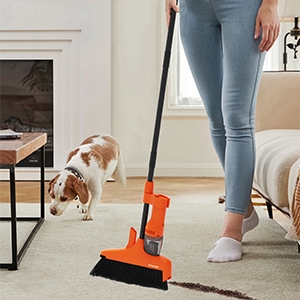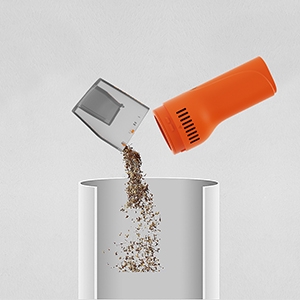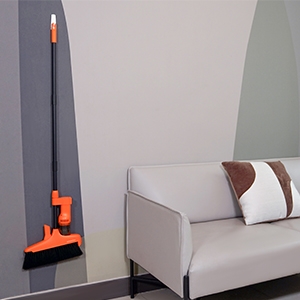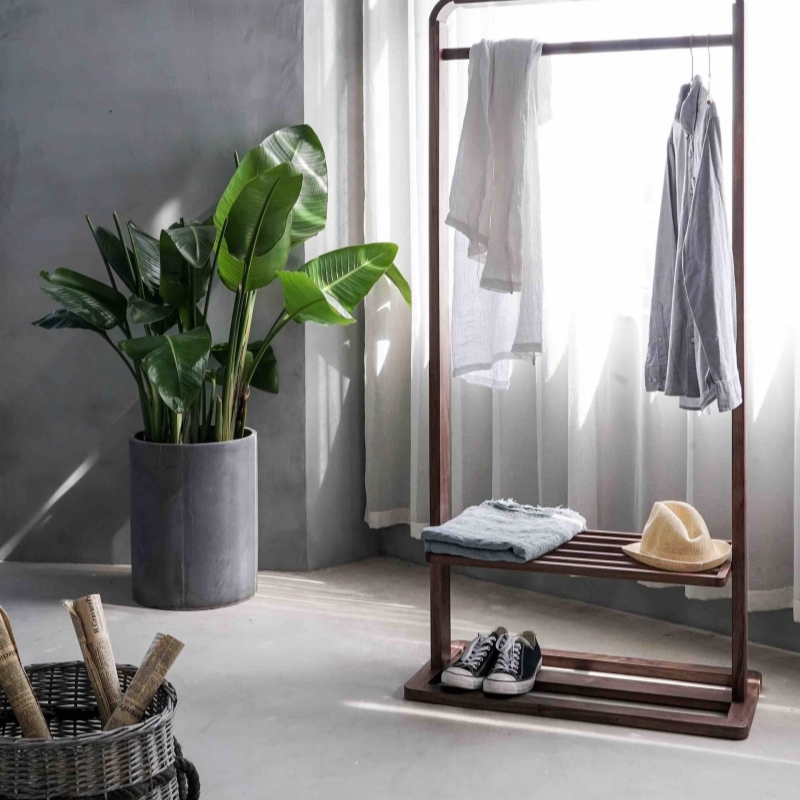
Essential Attachments for Your Broom Vacuum: A Buyer’s Guide
One great way to expand the functionality of your broom vacuum is by utilizing useful attachments and accessories. The right attachments allow you to clean

The world of broom vacuums has seen a plethora of innovations, but one debate that remains at the forefront is the choice between bagged and bagless models. Both types have carved their niche in the market, each boasting its unique set of advantages and challenges.
For many consumers, the decision boils down to more than just cleaning efficiency; it’s about maintenance, cost implications, and even environmental considerations. While bagged vacuums have long been the traditional choice, offering a straightforward method of disposing of dirt, bagless models have surged in popularity due to their perceived convenience and modern design.
But which is truly the better option for your household needs? In this comprehensive guide, we’ll dissect the pros and cons of each broom vacuum type, providing insights to help you make an informed decision.
Dive in as we unravel the intricacies of bagged versus bagless, and discover which suits your lifestyle best.

Bagged broom vacuums collect all vacuumed debris into disposable bags that act as the primary dust container. Once full, the bag is simply removed and thrown out, then replaced with a new bag.
The vacuum suction pulls dirt into the bag, but the bag’s inner lining traps fine particles while letting air pass through. This keeps dust inside the bag rather than escaping back into the air.
Bags are available in different sizes and capacities to match the broom vacuum model. Most brands sell replacement bags in multipacks for convenience.
Here are some of the notable benefits that bagged broom vacuums offer:
The multi-layer construction of vacuum bags traps allergens extremely well. Very little dust, pollen or dander escapes back into the air.
Bags can hold lots of debris before needing to be emptied or replaced. This reduces the frequency of stopping to change bags.
The bag itself acts as an additional filter stage on top of the vacuum’s primary filter to capture more fine particles.
You avoid direct contact with dirt, dust and allergens when changing bags. Just seal up the full bag and toss it out.
Taking bags out generates no dust clouds like emptying rigid dust bins. Bags contain dust completely.
Any smells from vacuumed debris remain sealed inside used bags even when removing them.
Many bagged vacuums have fill indicators that light up or change color when the bag is full and needs changing.
Overall, bags provide excellent dust containment and convenience. However, there are some limitations to the bagged design.
Here are some of the disadvantages associated with bagged models:
You need to continually buy replacement bags after the used ones are full. This adds to long-term operating costs.
Having to keep bags stocked and regularly replacing clogged bags can be a chore compared to just emptying dust bins.
If bags rip open or aren’t sealed properly, dust and allergens may leak into the air.
Bags are designed just for dry debris. Only bagless vacuums can also handle wet spills.
Suction power drops as bags fill up with dirt and dust. Emptying is required to restore full airflow.
While bags have excellent containment, the added costs and limited versatility are downsides to weighing. Next, we’ll examine key aspects of bagless broom vacuums.

Rather than bags, bagless broom vacuums use rigid plastic dust bins to accumulate all vacuumed debris. When full, the cup or bin can be manually emptied into the trash.
These dust cups use cyclonic action to spin debris against the bin walls where it falls to the bottom. This allows maximum airflow without clogs for consistent suction power.
Bagless bins are available in different sizes based on the vacuum model. Most are translucent to allow monitoring of the fill level. Several brands also now offer self-emptying dust bins.
Here are some of the most notable upsides to bagless broom vacuums:
Without having to buy replacement bags, the operating costs are lower over time.
Many bagless bins hold more debris than average bag capacities before needing to be emptied.
Cyclonic action keeps airflow steady rather than declining as bags fill up.
Transparent dust bins let you monitor the fill level and know when emptying is needed.
Bagless bins easily handle wet spills that bags can’t accommodate.
Dust bins only take seconds to empty rather than having to replace entire bags.
However, bagless vacuums also aren’t without some limitations.
Here are some areas where bagless broom vacuums come up a little short compared to bagged models:
Emptying rigid bins releases some dust and allergens into the air, unlike contained bags.
Without the bag’s added filtration layer, more fine dust can bypass filters and escape into the air.
Bagless bins must have filters washed regularly since all debris passes through them before reaching the bin.
Careless emptying of dust bins can create messy clouds of dust due to less containment than tied-off bags.
Bagless vacuums are prone to clogs from large items or too much fine dust restricting airflow.
Here is a helpful comparison overview of the two broom vacuum designs:
| Bagged | Bagless |
|-|-|-|
| Replacement bags required | No ongoing costs for bags |
| Superior dust containment | Dirt exposed when emptying bin |
| Slightly reduced airflow when full | Consistent strong airflow |
| Limited to dry debris | Also accommodates wet messes |
| Built-in extra filtration layer | Requires filter cleaning |
| Odors contained in bag | Possible dust clouds when emptying |
| Bag fill indicators | Clear dust bin shows fill level |
With their pros and cons laid out, here are key factors to help choose between bagged and bagless broom vacuums for your needs:
Those sensitive to dust or allergens may prefer bagged models to contain particles and smells completely.
If you use a vacuum for spills and liquids, only a bagless design will work since bags must stay dry.
Bagless bins often have a greater capacity for cleaning large homes longer than needing to empty debris.
Multi-layer filtration bags provide excellent fine particle retention for improved air quality.
Weigh the long-term costs of replacement bags versus greater upfront investment for a bagless vacuum.
If quick, mess-free emptying is important, bagless bins are simpler than changing bags.
Here are some top-rated bagged broom vacuums across price ranges:
Budget Under $100
Mid-range
High-end Over $300
Here are excellent bagless broom vacuum options:
Budget Under $200
Mid-range
High-end Over $400

The choice between bagged and bagless broom vacuums is more than just a matter of personal preference; it’s a decision that encompasses considerations of convenience, cost, maintenance, and environmental impact.
As we’ve delved into the nuances of each type, it’s evident that both have their merits and drawbacks. Bagged vacuums, with their hygienic disposal method, might appeal to those with allergies or sensitivities, while bagless models, with their transparent canisters and reduced waste, resonate with the environmentally conscious and those who prefer visual reassurance.
Ultimately, the best choice hinges on individual needs, household dynamics, and long-term considerations. It’s essential to weigh the ongoing costs of replacement bags against the ease of emptying a canister, and the environmental implications of disposable bags versus the energy consumption of bagless models.
In conclusion, as technology continues to evolve and offer new solutions, understanding the core differences between these vacuum types empowers consumers to make choices that align with their values and lifestyles.
Whether you lean towards bagged or bagless, the key is to choose a model that complements your cleaning routine and enhances your home’s cleanliness and comfort.


One great way to expand the functionality of your broom vacuum is by utilizing useful attachments and accessories. The right attachments allow you to clean

The broom vacuum, a staple in modern households, has transformed the way we approach cleaning, offering a blend of convenience and efficiency. However, like all

In today’s fast-paced world, cordless broom vacuums have emerged as a household essential, offering unparalleled convenience and mobility. However, one common concern among users is

Broom vacuums, also commonly known as stick vacuums, are a popular choice for convenient whole-home cleaning. With their lightweight designs and versatile capabilities, broom vacuums

One great way to expand the functionality of your broom vacuum is by utilizing useful attachments and accessories. The right attachments allow you to clean

The broom vacuum, a staple in modern households, has transformed the way we approach cleaning, offering a blend of convenience and efficiency. However, like all

The world of broom vacuums has seen a plethora of innovations, but one debate that remains at the forefront is the choice between bagged and

In today’s fast-paced world, cordless broom vacuums have emerged as a household essential, offering unparalleled convenience and mobility. However, one common concern among users is
Copyright © 2024 vacbroomvacuum. All Rights Reserved.